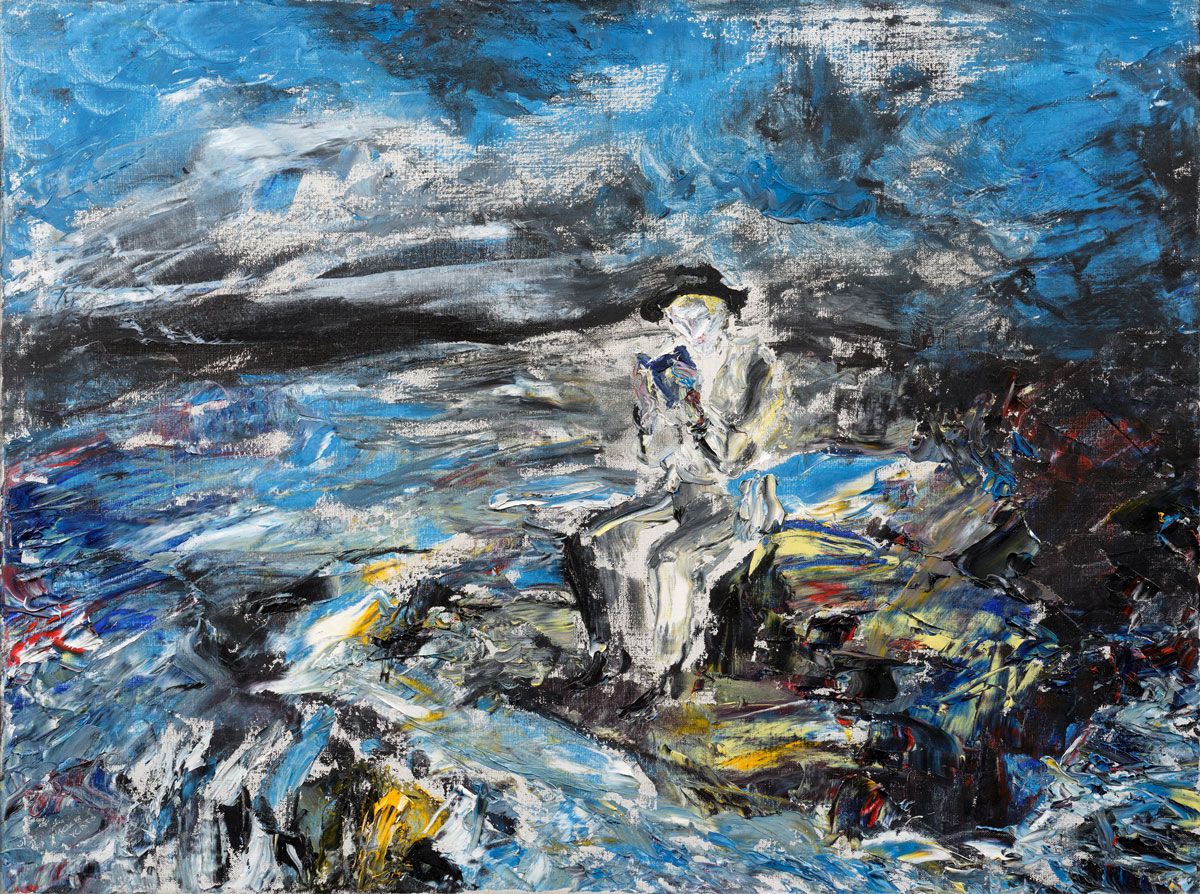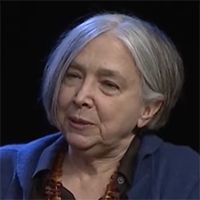
Jack Butler Yeats (1871–1957)
Rushing Waters, 1947
Oil on canvas
McMullen Museum of Art, Boston College, Carolyn A. and Peter S. Lynch Collection, 2021.24

Kevin Lotery
Assistant Professor, Art History

Jack Butler Yeats was a famously independent painter who never aligned himself with any school or avant-garde, despite having lived through periods of great innovation in both modern painting and avant-garde culture. As the Irish playwright Samuel Beckett (1906–89) declared in his homage to the painter, Yeats was “incomparable,” his “great solitary oeuvre” resisting the art historian’s desire for easy comparison.1 A painting like Rushing Waters might, for example, remind us of the German expressionist tactic of investing the bare, naive application of paint with erotic charge or political agitation. Alternatively, it might call up postwar painters like Jean Dubuffet, Jean Fautrier, or Francis Bacon, whose brutal paintings, contemporaneous with Rushing Waters, also invited spectators into scenographies of bodily disfiguration and painterly dispersal, stilled forever by the fact of having been painted.
But as Beckett noted enigmatically, Yeats’s marks were too “dispassionate” for all that, and in late works like Rushing Waters the painter’s icy, “inhuman” dispassion takes center stage.2 Here, we are given an image of a lone figure lacking interiority, its boundaries dissolving into mere pigment, like mud and water running down a surface. One is reminded of the key understanding of “late work” as articulated by German Jewish thinker Theodor W. Adorno (1903–69) in 1937. Adorno sees an artist’s final works not so much as a coherent composition but as mere aesthetic matter that has departed and abstracted itself from the hand of the aging “master” who created it.3 In an artist’s late works, then, marks no longer “express” but revert to “masses of material” that only occasionally follow the painter’s commands.4
In Rushing Waters, Yeats shows the human subject in the process of being exiled from the comforts and pleasures of painting, whether its genres (landscape, the portrait) or its privileged skills (drawing, modeling, the construction of perspectival space). It seems that the human figure, that most privileged subject of Western art and culture, is no longer at home in the space of painting, where it had long been celebrated and contemplated. Instead, it finds itself back in the muck, on the verge of decomposition. Beckett of course described it best, seeing in Yeats’s work not the pathos of the individual, independent subject defining itself against nature (or in paint) but rather the base materiality of all things: “one’s ultimate hard irreducible inorganic singleness.”5
1. Samuel Beckett, “Homage to Jack B. Yeats” (April 1954), in Jack B. Yeats: A Celtic Visionary, ed. Howard Smith and Stephen Snoddy (Manchester: City Art Galleries, 1996), n.p.
2. Quoted in Colm Tóibín, “The Unmapped Space: Memory in Yeats, Joyce, and Beckett,” in Jack B. Yeats: Painting and Memory, ed. Donal Maguire and Brendan Rooney (Dublin: National Gallery of Ireland, 2021), 21. See also Martha Dow Fehsenfeld and Lois More Overbeck, eds., The Letters of Samuel Beckett, 1929–1940 (Cambridge: Cambridge University Press, 2009).
3. Theodor W. Adorno, “Late Style in Beethoven” (1937), in Essays on Music, ed. Richard Leppert, trans. Susan H. Gillespie (Berkeley: University of California Press, 2002), 567.
4. Adorno, 566.
5. Beckett, quoted in Tóibín, “Unmapped Space,” 21.
Vera Kreilkamp
Professor, Irish Studies

Rushing Waters was created in 1947, the year that Jack Yeats’s wife of fifty-three years, Cottie Yeats, died. Using the white of the canvas and a subdued and gloomy palette, Yeats painted an apparition-like figure sitting on an outcropping of rock, a book raised to his face to read. A stream rushes from behind and around the figure, spilling out into the viewers’ space and moves off to the right. Light bathes the figure and the stream; the rest is framed in a darkness sparingly inflected with whites and yellows. In the characteristically expressionist and symbolist style of his late period, Yeats seems to juxtapose Ireland’s literature and its western landscape tradition, both of which are deeply rooted within him and his family. The viewers of the painting may themselves be privy to the landscape described in the reader’s book.
